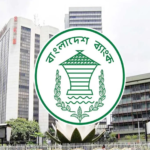Each year on October 13, the world observes the International Day for Disaster Risk Reduction, a day dedicated to raising awareness about the importance of disaster risk reduction and resilience-building in the face of natural and human-made disasters. This day emphasizes that proactive measures can significantly reduce the impact of disasters on communities and save lives.
The Significance of Disaster Risk Reduction:
Disasters, whether natural (such as earthquakes, floods, hurricanes, and wildfires) or human-made (such as industrial accidents or pandemics), have the potential to cause immense harm, including loss of life, displacement, and economic devastation. Vulnerable communities often suffer the most from these events.
Disaster risk reduction is a systematic approach to minimize the risks and vulnerabilities that lead to disasters and their impacts. It involves understanding the risks, taking preventive measures, and preparing for effective responses when disasters occur. By building resilience and reducing risks, it is possible to mitigate the impact of disasters and protect lives and livelihoods.
The Sendai Framework for Disaster Risk Reduction:
The International Day for Disaster Risk Reduction is an opportunity to highlight the importance of the Sendai Framework for Disaster Risk Reduction, a global strategy adopted in 2015 by United Nations member states. The framework sets out four priorities for action:
- Understanding Risk: Promoting the understanding of disaster risk, as well as its causes and consequences, to enhance disaster risk reduction strategies.
- Strengthening Governance: Ensuring that disaster risk reduction is integrated into policies, plans, and practices at all levels of government.
- Investing in Resilience: Encouraging the development and strengthening of resilience among individuals, communities, and countries.
- Enhancing Preparedness: Fostering the development of effective disaster preparedness and response measures, including early warning systems and improved coordination.
Local and Global Engagement:
The observance of the International Day for Disaster Risk Reduction involves a wide range of activities, from local community events to global initiatives. Governments, non-governmental organizations, and international bodies collaborate to:
- Raise public awareness about disaster risk reduction.
- Share knowledge and best practices in disaster preparedness and response.
- Advocate for policy changes that prioritize resilience and risk reduction.
- Recognize the importance of communities in disaster risk reduction efforts.
Individual and Community Actions:
Individuals can contribute to disaster risk reduction by:
- Being Informed: Stay informed about the types of disasters that can affect your area and understand the risks involved.
- Preparedness: Develop a disaster preparedness plan, including emergency kits and evacuation strategies.
- Community Engagement: Participate in local initiatives for disaster risk reduction and support community-based resilience efforts.
- Advocacy: Advocate for policies and practices that prioritize disaster risk reduction in your region.
The International Day for Disaster Risk Reduction serves as a reminder that disaster risk reduction is a shared responsibility, from individuals and communities to governments and international organizations. By working together to reduce vulnerabilities and build resilience, we can create safer, more disaster-resistant communities and a more secure future for all.











